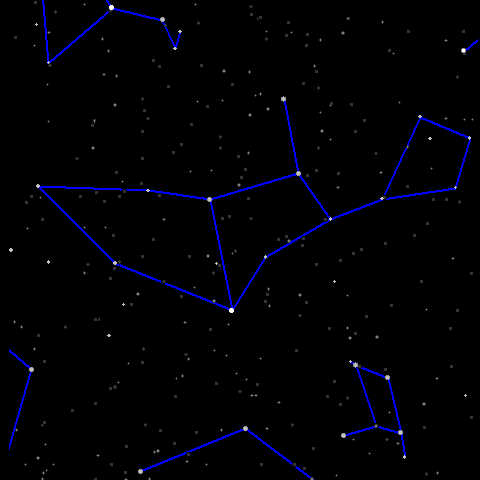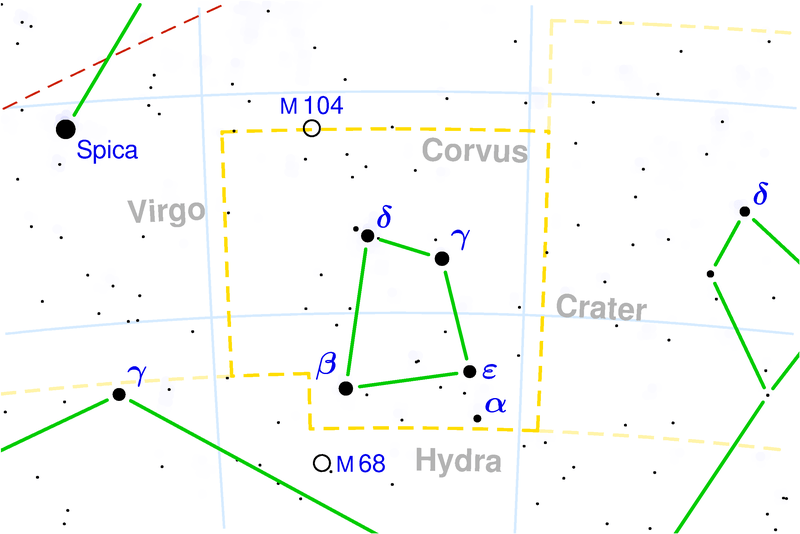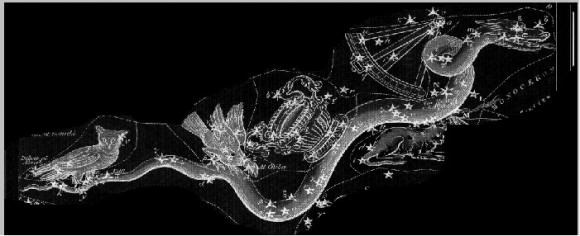With the Moon now gone from the early evening sky and the lightning bugs beginning to twinkle in the summer fields, isn’t it time you stopped to do a little stargazing? If you’re outside when the skies begin the get dark, the first star you will see overhead is the brilliant orange Arcturus, which will point the way to blue/white Spica as the skies get dark. If you listen to the wind, you’ll hear the night birds beginning to call… and maybe even the voice of the stars telling you about the Cup and the Raven!
 “Legend tells us that the constellation of Crater is the cup of the gods. A cup befitting the god of the skies… Apollo. And who holds this cup, dressed in black? The Raven… Corvus. Once upon a time, the Raven – or Crow – had beautiful silver feathers… so shiny they appeared almost white. They were the sacred birds of Apollo, god of the skies, and were able to speak in a human voice. Soon enough, Apollo fell in love with a beautiful maiden, Virgo, and he sent the Raven to spy upon her. When the Raven returned with the news that Virgo did not return his love, Apollo became very angry and turned the bird’s feathers black for bringing back such bad news.”
“Legend tells us that the constellation of Crater is the cup of the gods. A cup befitting the god of the skies… Apollo. And who holds this cup, dressed in black? The Raven… Corvus. Once upon a time, the Raven – or Crow – had beautiful silver feathers… so shiny they appeared almost white. They were the sacred birds of Apollo, god of the skies, and were able to speak in a human voice. Soon enough, Apollo fell in love with a beautiful maiden, Virgo, and he sent the Raven to spy upon her. When the Raven returned with the news that Virgo did not return his love, Apollo became very angry and turned the bird’s feathers black for bringing back such bad news.”

“With his beautiful silver feathers gone, the Raven became very hard to see among the stars. As night falls, only a star here and there appears to mark his place in the sky. Wanting to gain back favor, the Raven asked Apollo to set him a task. The great god of the sky then told the crow to fetch him a cup of water in his golden goblet – Crater.
However, the end of the tale is a sad one. It is the story of a creature sent to fetch water for his master, only to tarry too long waiting on a fig to ripen. When he realized his mistake, the sorry Raven returned to Apollo with his cup and brought along the serpent Hydra in his claws as well. Angry, Apollo tossed them into the sky for all eternity. The Raven’s beautiful voice was taken away as it is forever to be punished by being perpetually thirsty and thus its rough caw.”
Virgo did not escape the wrath of Apollo either, for he decided if he could not have her? No man could. And so he tossed her into the stars to forever remain a virgin and it is to the south that all of this story’s players remain to this day.”
Can you find the stars that make up this sad tale? Then look for one of the brightest stars to the south this time of year, Spica. To its west you will see the the crooked box shape of Corvus and further west the faint U-shape of the goblet, Crater. On a dark night, look below them for the long, faint chain of stars that forms Hydra, the water snake. Explore it these constellations with binoculars! What treasures are hidden inside?
Many thanks to Torsten Bronger for the Corvus constellation map, Hubblesite for the historical Corvus image, Animation by Michelet B., and Constellation Mythology map courtesy of the University of Michigan. We thank you!


